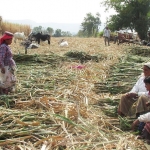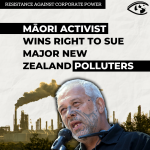Facts on Asians and Pacific Islanders and Tobacco
* According to the 1990 Census, the Asian Pacific Islander (API) population in California is 2,845,659. In 1992, the combined Asian and Pacific Islanders represents approximately 10% of the state's population.
* A 1992 study by the University of Southern California found Asian neighborhoods had 17 times the number of cigarette billboards than white neighborhoods.
* Although several California and national studies indicate that API (as one group) has a lower smoking rate than the general population overall, these statistics can be somewhat misleading. These studies do not break down the smoking rates by API subgroups or by birth place, thereby masking high-risk smoking segments of the API community. Other studies, such as the 1992 Tobacco Use in California survey conducted by the California Department of Health Services were conducted only in English and Spanish, thereby resulting in an underestimation of API smoking rates.
* While little formal data is available in the Pacific, the consensus among the U.S.-associated Pacific Island jurisdictions is that tobacco use is growing in Pacific Island countries and is a direct cause of premature morbidity and mortality among Pacific Islander populations. (U.S. Pacific Tobacco Prevention and Control Workshop, April 25, 1994.) In Toward a Tobacco-Free Hawai'i: Hawaii's Trends in Tobacco Use 1986-1993 cigarette smoking is considered the nation's "number one" public health problem. In Smoking in the Kingdom of Tonga: report from a national survey the report concludes that "Tonga will experience high levels of tobacco-related disease in the future... unless smoking rates are reduced." Pacific Islanders in the United States are not only influenced by the tobacco industry's heavy marketing in the islands but also by tobacco industry targeting of Pacific Islander neighborhoods in the U.S. It is also important to know that 75% of all Pacific Islanders in the U.S. live in California and Hawai'i.
* Tobacco use among recent API immigrant males is much higher than in second and third generation Asian Americans. For immigrants, smoking cigarettes is woven into the social fabric of the culture. Aggressive marketing by the tobacco industry in the Pacific Rim countries has resulted in API's addiction to tobacco by the time they arrive in the U.S.
* Three Asian American immigrant groups have smoking rates far higher than California or national average for males. Recent studies in California show that prevalence rates are : 65% for Vietnamese, 55% for Chinese-Vietnamese and 71% for Cambodian males. (Rumbaut, R.G. "Portraits, Patterns and Predictor of the Refugee Adaptation Process: Result and Reflection from the IHARP Panel" In: Haines, D.W. (ed): Refugees as Immigrants; Tototira, NJ: Routtan and Littlefield, 1989.)
* Among the Chinese population, the most recent immigrant and non-English-speaking are more likely to be smokers that those who speak English and are American-born. Many Asian immigrants are not aware of the hazards associated with smoking. In an Oakland Chinatown study, 40% of Chinese males did not know that smoking can cause heart disease. (Chen, A.M. and Lew, R., Asian Health Services, Oakland, and 1991 CDC Cigarette Smoking among Chinese, Vietnamese and Hispanics, California, 1989-1991. MMWR 1992; 41:362-367).
* While the smoking rate between 1971 and 1985 has fallen in countries like the U.S., Great Britain, Australia and New Zealand, the consumption in many developing countries has been increasing, mainly due to U.S. tobacco industry's aggressive marketing. During that same time frame, tobacco increased in Asians by 22% (Masironi, R. and K. Rothwell. "Trends in and Effect of Smoking in the World." World Health Statistics Quarterly, 41 (3-4:) 228-41).
* U.S. tobacco companies are making up for dwindling domestic sales by expanding sales abroad. Asian health officials complain that the influx of fancy foreign brands hurts their efforts to control the habit, particularly among the young. ("Where There's Smoke" Time Magazine, November 29, 1992).
For more information, please contact the:
Asian Pacific Islander American Health Forum
116 New Montgomery, Ste. 531
San Francisco, CA 94105
(415) 521-2710
- 109 Tobacco



